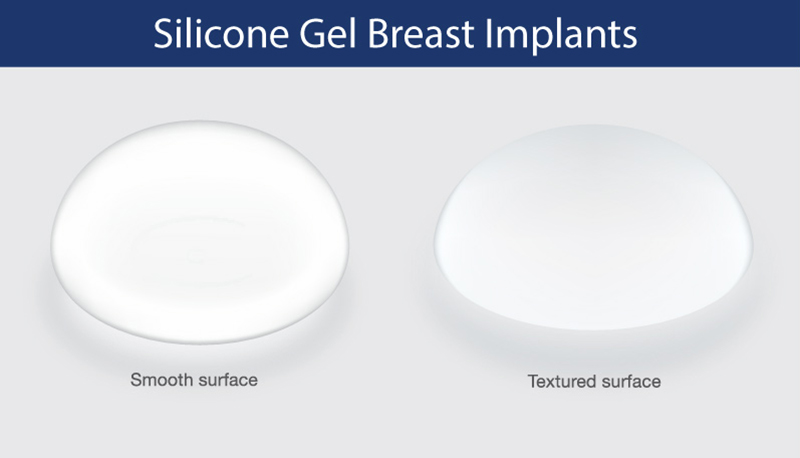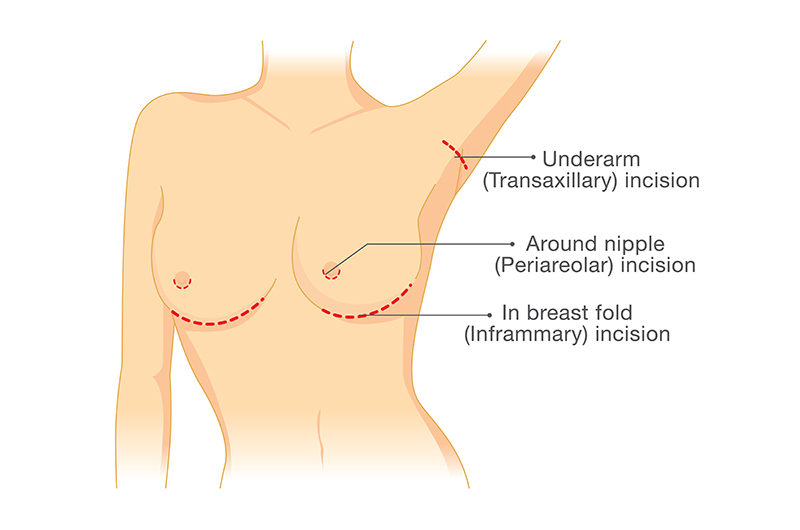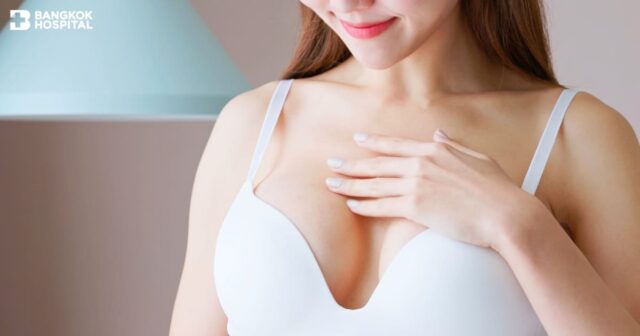From recent statistical data, more than 10 million people have undergone breast augmentation worldwide. In 2018, American Society of Plastic Surgeons (ASPS), the largest plastic surgery specialty organization in the world reveals that breast augmentation has remained the 1st rank of the most popular plastic surgery. Its popularity has been increasingly growing with over 300,000 cases per year. Domestically, in Thailand, International Society of Aesthetic Plastic Surgery (ISAPS) indicates that an estimated number of women with breast augmentation is approximately 14,000 cases per year. In fact, this number seems to be underestimated since the actual number should be over 20,000 cases per year
Types of breast implants
Breast augmentation can be categorized into 2 main types. It could be performed as a single approach or in a combination at the same time.
- Breast implant augmentation: Available implants are saline and various types of silicones. Saline-filled implants are silicone shells filled with sterile salt water (saline). Some types are pre-filled and others are filled during the implant surgery. While silicone gel-filled implants are silicone shells filled with a plastic gel (silicone).
- Fat transfer augmentation: Fat transfer breast augmentation takes fat from other parts of patient’s body through liposuction and injects it into the breasts in order to enlarge their size. This is an increasingly used technique since it uses autologous fats obtained from patients themselves with less possible side effects that might cause by artificial implants. In addition, it looks more natural in comparison with implant ones. Nevertheless, it is more complicated procedure due to the fat transfer requires liposuction and the predicted outcomes after fat implant might vary among individuals.
Silicone gel implants
The available implants for breast augmentation are almost silicone gels, defined as silicone shells filled with a plastic gel (silicone). The outer surface of silicone gel implants can be classified into 2 types:
- Textured breast implants: The rough surface of textured implants allows them to adhere to surrounding tissue, which makes them less likely to become repositioned in the implant pocket.
- Smooth breast implants: Smooth breast implants provide soft feeling. They can move around with the breast implant pocket, allowing more natural movement.
In addition, several shapes are available e.g. round implants and teardrop implants. Size and breast projection can be also individually customized. Due to the advancements in technology, silicone gel implants have improved quality and durability. Having new silicone implants every 5 or 10 years is not necessarily required. Owning to the superior advantages of textured breast implants, it has gained popularity among Thai women. Some researches indicate that textured implants have been shown benefits to reduce the risk of scar formation and its rough surface enables them to adhere to surrounding tissue, leading to less chances of being repositioned. Different brands might exhibit a wide range of quality and surface characteristics ranging from macrotextured implants to micro-nano textured implants. More importantly, the selection of appropriate and safe silicone gel implants must be instructed by highly experienced and well-train plastic surgeons. After breast augmentation, regular breast check-up is highly advised.
Selection of appropriate silicone implants
To choose silicone implants appropriately and safely, certain factors are involved such as:
- Height and body width of the patient
- Current breast characteristics e.g. size, projection, skin thickness, fat layer in the breast and other individual’s conditions.
Breast augmentation surgery
There are different locations to place breast implants, these include:
- The underside of the breasts: In this most common technique, the surgeon makes an incision on the underside of the breast, in the natural skin fold. Then the implant is placed through this opening. Through this cut, implants can be placed accurately with less blood loss and quicker recovery time. This site of surgery is the main location to repair or remove the implants.
- Under the armpit or around the edge of areola, darkened area around the nipple. Surgery at these site is more complicated and might result in more blood loss, more post-operative complications and longer recovery time.
Location to place implants
Breast augmentation is done by placing implants usually behind breast tissue or under the chest muscle. Selected locations depend on:
- Skin thickness of the breasts
- The projection of the breasts
- The shape and current size of the breasts
Self-preparation before breast implants
Prior to breast augmentation surgery, patients should be prepared as follows:
- Physical examination.
- Blood tests.
- Chest X-ray.
- Electrocardiogram as scheduled by age.
- No food and drink before surgery 6 hours.
- Certain medications must be stopped prior to surgery such as antiplatelet or anticoagulant drugs e.g. aspirin as well as vitamins and supplements.
- Smoke and alcohol cessation at least 4 weeks before surgery
Steps of breast augmentation surgery
In general, breast augmentation surgery involves these steps:
- Patient undergoes general anesthesia done by anesthesiologist.
- Plastic surgeon starts operating, making incisions at the selected sites, placing implants and suturing.
- Operation normally takes 1.5 up to 2 hours.
Post-operative complications after breast augmentation surgery
Post-operative complications might include:
- Pain at the breast
- Swelling skin
- Surgical wound might become infected and inflamed with presence of blood or pus
- Palpable mass in the breast
- Undesired effects from general anesthesia such as nausea and vomiting
- Long-term complications might involve scar formation inside the breast, implant repositioning, poor breast projection, breast distortion and implant ruptures.
Recovery after breast augmentation surgery
After breast augmentation, special care must be provided:
- Surgical wound: During the first week after surgery, patients can have shower regularly since the wounds are well protected by waterproof bandages. However, swimming or taking a bath in a bathtub must be avoided. After the surgical wounds are completely healed, scar removal cream or plasters should be additionally applied.
- Breast care after implant surgery: Wearing bras without wires is highly advised for at least 1 month. Activities and exercise that strongly impact the chest or arms must be also strictly avoided during the first month after surgery.
- Lifestyle changes: Smoking and alcohol drinking are strictly prohibited at least 2 weeks as well as fermented foods.
- Long-term care: Breast-self examination is highly recommended in a combination of breast examination by doctors and mammogram as scheduled.
Breast augmentation revision
In some patients, they might need to re-operate due to several reasons such as:
- Post-operative complications e.g. infection, inflammation and bleeding.
- Formation of scar or tissue fibrosis.
- Implant rupture which is fairly rare.
- Adjustment of size or shape of the implants.
Age range and breast augmentation
Although women of many ages qualify for breast augmentation, but breast augmentation surgery in younger age before having children significantly results in a faster recovery time with tightening breast and satisfied projection. However, due to the firm skin, it might take longer time until implants fully adhere to the surrounding tissues. Breast augmentation in older age especially after having children results in more flexibility, allowing implants to be quickly placed in the breast implant pocket. Since breastfeeding might induce poor breast projection, breast lift operation might be considered.
To achieve the best possible outcomes with high degree of safety and satisfactory results, highly skilled plastic surgeons play a crucial role to determine type of surgery and type of silicone implants, perform operation with less possible chances of undesired complications. If breast augmentation is required, it should be done by standard hospital supported by cutting-edge technology and multidisciplinary team specialized in surgery. Not only to provide the appropriate surgical technique, breast augmentation should fulfill patient’s satisfaction with high degree of safety.












